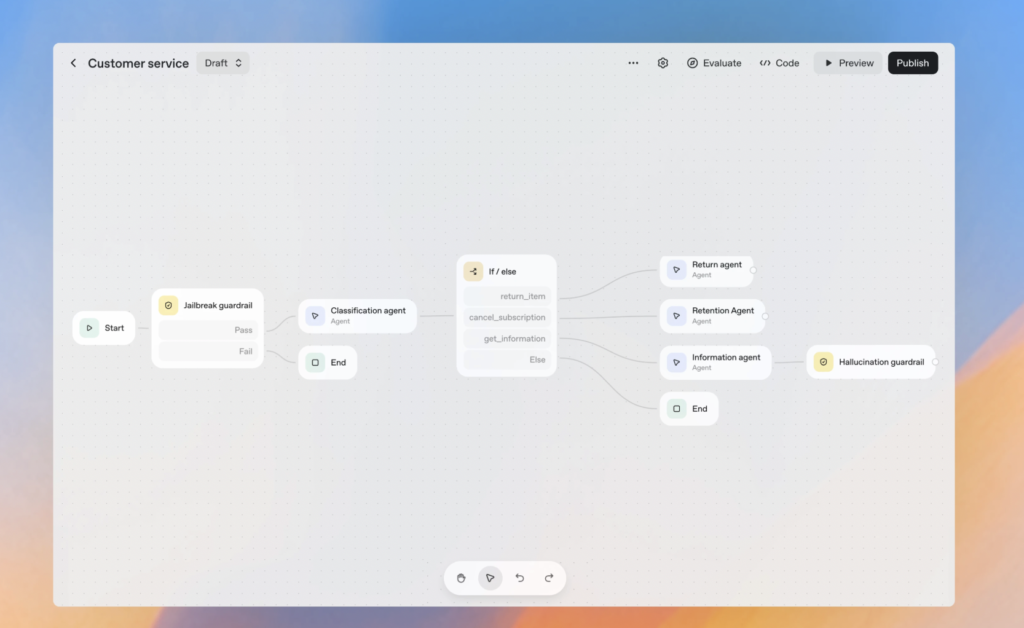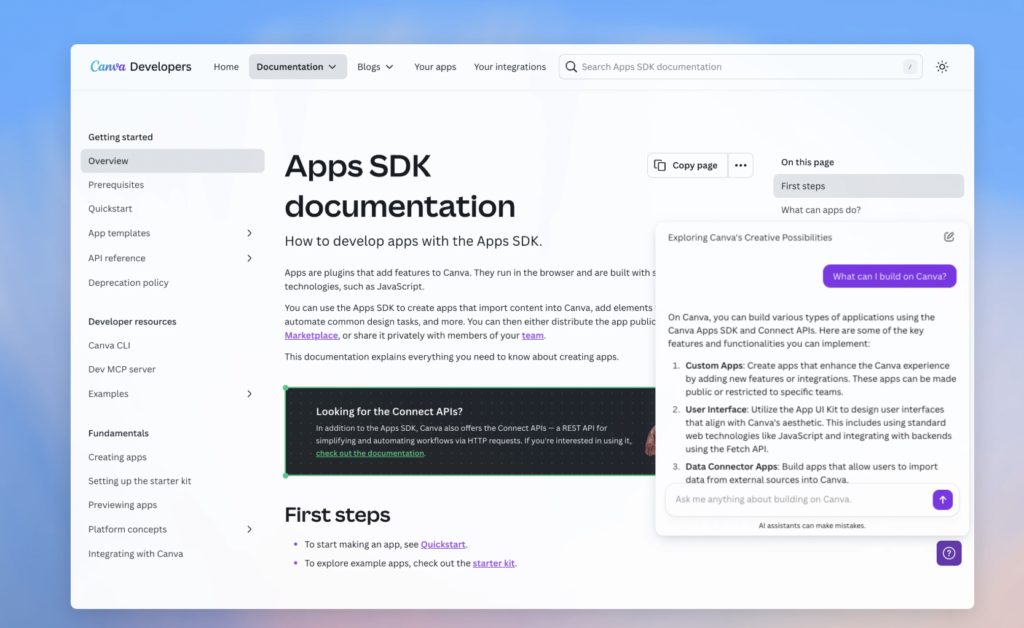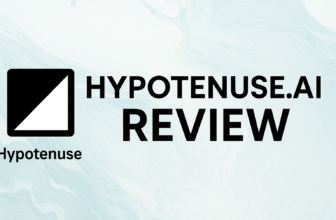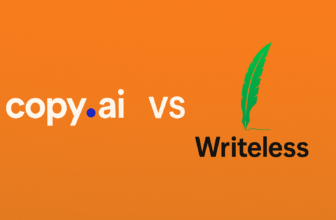Artificial Intelligence is moving from single-response models to autonomous, multi-step agents that can take actions, connect with data, and drive workflows. But building such agents has been messy. Developers often stitch together tools like LangChain, APIs, connectors, dashboards, and evaluation scripts. This often leads to fragmentation and complexity.
To solve this, OpenAI has introduced AgentKit – a unified framework for building, deploying, and optimizing AI agents at scale.
What is AgentKit?
AgentKit is an end-to-end developer and enterprise toolkit that simplifies the lifecycle of AI agents ranging from design and orchestration to deployment, integration, and optimization.
It’s built on top of OpenAI’s APIs and adds missing layers such as:
- Visual Agent Builder – drag-and-drop canvas to design agent workflows.
- Connector Registry – secure integration with internal tools, APIs, and third-party systems.
- ChatKit – embed conversational agent experiences directly into apps/websites.
- Evaluation Tools – test, grade, and optimize agents with real datasets.
- Reinforcement Fine-Tuning (RFT) – teach agents to use tools more effectively.
Why AgentKit Matters
Building AI agents today often feels like juggling too many moving parts. You need a language model, a framework (like LangChain), your own glue code, APIs, dashboards, connectors, and evaluation scripts. This works for small prototypes but breaks down at scale. AgentKit changes this by unifying the process.
Here’s a detailed look at what makes it matter:
1. Reduces Fragmentation
Traditionally, developers have to stitch together multiple tools:
- LangChain or LlamaIndex for orchestration.
- Custom scripts for API/tool calls.
- Dashboards for monitoring and evaluation.
This creates fragile systems where one update can break the entire pipeline.
AgentKit consolidates these layers offering a single toolkit with workflow orchestration, connectors, and evaluation built-in. Instead of managing 5+ tools, teams manage just one unified system.
Impact: Reduced technical debt, fewer integration headaches, and faster onboarding for new developers.
2. Accelerates Prototyping
Most agent frameworks today require writing boilerplate code, wiring APIs, and manually testing workflows. That slows down innovation.
AgentKit introduces a visual agent builder, which is a drag-and-drop canvas where you can:
- Design agent logic.
- Add tool calls or API connectors.
- Version and test workflows instantly.
This means an idea that used to take days of coding can be tested in hours.
Impact: Faster time-to-market for startups, more agile experimentation for enterprises.
3. Enterprise-Ready
Enterprises care less about flashy demos and more about:
- Governance (who can change the agent?).
- Versioning (which version is in production?).
- Security (are integrations safe?).
AgentKit includes a Connector Registry that governs how agents access data sources and APIs, with built-in controls for security and permissions. It also supports structured versioning so enterprises can deploy safely without fear of “rogue agents.”
Impact: Enterprises can finally adopt AI agents at scale with confidence in compliance, security, and reliability.
4. Scalable Optimization
AI agents don’t just need to work once, they need to improve over time. Traditionally, teams build ad hoc scripts or manual test cases to evaluate performance.
AgentKit integrates evaluation (Evals):
- Run agents against datasets.
- Grade outputs using automated metrics or human-in-the-loop reviews.
- Identify weak spots in reasoning or tool use.
For advanced users, Reinforcement Fine-Tuning (RFT) teaches agents to get better at calling tools or meeting business goals.
Impact: Continuous improvement pipeline for AI agents, similar to CI/CD in software engineering.
5. Seamless Embedding
Many teams struggle with the last step: embedding agents into real products. Custom UI code, streaming APIs, and chat state management often create complexity.
AgentKit comes with ChatKit, a plug-and-play solution for embedding agents into:
- Websites.
- Mobile apps.
- Internal dashboards.
It handles threads, streaming responses, and conversation state out-of-the-box.
Impact: Product teams can add agent-driven experiences to user flows without reinventing the wheel.
Who should use AgentKit?
1. Developers & AI Engineers
Why: AgentKit provides a visual builder and APIs to design and test multi-step agent workflows, connect to data, and manage prompt versions.
Use Case Examples:
- Building a customer-support chatbot that integrates with a company’s CRM.
- Creating workflow agents for document analysis, coding assistants, or internal knowledge bots.
2. Enterprises & Product Teams
Why: Large companies need governance, connectors, and reliability when rolling out AI agents across teams. AgentKit’s connector registry ensures secure integrations with internal APIs, and its evaluation tools help track performance.
Use Case Examples:
- Financial institutions deploying compliance-aware AI assistants.
- Retail/e-commerce teams running AI shopping assistants connected to product databases.
3. Startups & SaaS Builders
Why: Startups building AI-native apps can skip reinventing infrastructure and embed chat/agent flows directly with ChatKit.
Use Case Examples:
- A SaaS startup creating a “smart project manager” that automates task tracking.
- A small team building an “AI tutor” app with conversational memory and content retrieval.
4. AI Researchers & Optimizers
Why: The Evals framework in AgentKit helps run experiments, measure output quality, and refine agents over time. The Reinforcement Fine-Tuning (RFT) option is especially useful for pushing model behavior toward specific business goals.
Use Case Examples:
- Evaluating which agent strategy works best (e.g., direct answering vs tool-calling).
- Fine-tuning agents for highly specialized industries like healthcare or law.
5. Companies Migrating from DIY Frameworks
Why: Many teams today patch together LangChain, custom APIs, and homegrown dashboards. AgentKit is designed to reduce fragmentation and centralize workflows.
Use Case Examples:
- Replacing multiple tools with a single integrated agent pipeline.
- Scaling an MVP prototype into a reliable enterprise product.
Who should not use AgentKit yet?
1. Casual Creators & Hobbyists
- If you just want a simple chatbot or a fun personal assistant, AgentKit is overkill.
- Lighter tools (e.g., no-code chatbot builders, ChatGPT with custom instructions, Zapier-style flows) will get you faster results without the setup overhead.
2. Small Businesses Without Technical Teams
- AgentKit requires developer skills to connect APIs, manage connectors, and evaluate outputs.
- A small shop that just needs a “FAQ bot” or “social media caption generator” won’t benefit from the complexity.
3. One-Off Projects / Prototypes
- If you’re building something quick for a demo, hackathon, or internal test, you don’t need the full orchestration, registry, or evaluation tools.
- It’s like using enterprise-grade cloud infrastructure just to build a weekend project. It’s wasted effort.
4. Teams With No Data Integration Needs
- If your agent doesn’t need to pull from databases, APIs, or third-party systems, then AgentKit’s main value (connectors + registry) won’t matter.
- A standalone LLM prompt app or even ChatGPT “custom GPTs” might be enough.
5. Budget-Constrained Users
- AgentKit (like most enterprise-ready platforms) is likely tied to OpenAI’s premium offerings and could come with additional cost (for evaluations, fine-tuning, etc.).
- If you’re running on a tight budget and only need basic automation, cheaper frameworks or open-source tools might suit you better.
AgentKit vs Other Options
| Tool | Best For | Pros | Cons |
|---|---|---|---|
| AgentKit | Enterprises & devs building production-ready agents | Unified system, connectors, evals, fine-tuning | Requires dev skills, likely costlier |
| Custom GPTs | Individuals, creators | Easy setup, no coding, free/low cost | Limited integrations, no governance |
| LangChain / LlamaIndex | Experimentation, startups | Open-source flexibility, community support | Fragmented, requires heavy setup |
| Zapier-style AI tools | Non-technical teams | No-code automation, easy workflows | Limited customization, not scalable |
Potential Use Cases
- Customer Support Agents – integrated with CRM and ticketing tools.
- E-commerce Shopping Assistants – pulling live product data and inventory.
- AI Tutors & Trainers – adaptive agents using knowledge bases.
- Knowledge Management Bots – surfacing enterprise insights securely.
- Developer Agents – code review, deployment, and API orchestration.
Why AgentKit Is a Big Deal
AgentKit is not just another framework. By combining a visual builder, connectors, evaluations, and deployment features into one toolkit, it makes AI agents production-ready, scalable, and governed.
- For enterprises and serious AI builders, AgentKit could be the backbone of future agent-driven apps.
- For casual users or quick projects, lighter tools like Custom GPTs remain a better fit.
Either way, AgentKit signals a future where AI agents move from experimental hacks to core business infrastructure.









